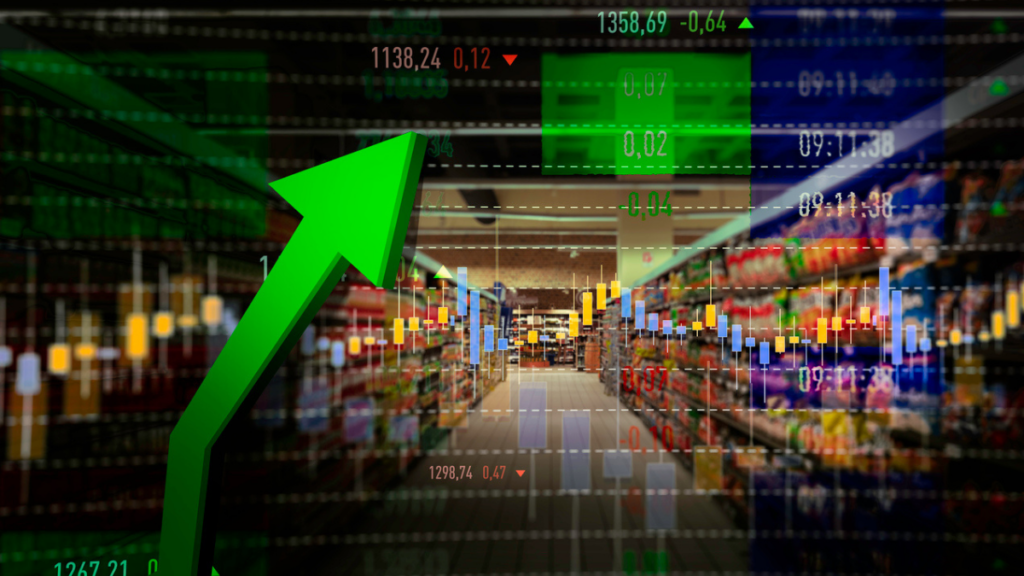By Jamil Ahmed, Distinguished Engineer at Solace
Retailers believed they had witnessed the full extent of challenges brought on by the pandemic. However, this year has presented them with a new set of difficulties: unprecedented levels of food inflation, insecure supply chains due to geopolitical conflict, and unpredictable customer expectations. To overcome these obstacles, retailers must focus on customer engagement, captivating shopping experiences, and an efficient inventory management system to effectively dominate the competition.
The key element that fuels all of these aspects is data. Despite the vitality of data to retail success, a recent IDC survey shows that only 24% of retailers have embraced Event-Driven Architecture (EDA), the fundamental IT backbone of a real-time data organisation. Retailers possess a unique advantage over other industries as they have access to vast amounts of first-hand customer data, encompassing spending habits, foot traffic patterns, and seasonal trends. In a world where customer data is key, retailers’ ability to leverage and maximise their first-party data to optimise customer satisfaction and personalisation is vital for retailer success.
Sewing systems together for a seamless system
In response to the competitive market and shifting customer loyalty, retailers often pour money into the next big thing in e-commerce, whether that be click-and-collect, electronic shelf labels (ESL) or buy-now-pay-later schemes. When retailers contemplate their upcoming digital transformation plans, it is crucial for them to assess their current systems more holistically. It is highly probable that any new digital advancements, such as click and collect, will merely be exacerbating the disconnection and fragmentation of an already outdated system.
In retail, every transaction generates data, encompassing various elements such as the product’s item number, price, as well as the customer’s billing and shipping address. These data points collectively fall under the term ‘events.’ Other examples of events include registering a customer to a loyalty program or uploading their reward points. Essentially, events represent the various processes that take place across all platforms and applications within the system. To ensure the smooth flow of these events to all systems to establish a solid foundation, such as an event-driven architecture.
EDA is the fundamental framework that enables organisations to monitor and analyse the series of events occurring in their wider business. It achieves this by decoupling the events from the system it originated in, allowing them to be processed and transmitted in real-time to other systems, people or devices. When managing substantial volumes of customer interactions, such as transactions, shipments, and delivery updates, decoupling the data becomes indispensable for providing a comprehensive view of the retail experience.
This, from a store management perspective, underpins the ability to gain a comprehensive overview of the entire ecosystem behind the retail journey. For instance, a retailer offering omnichannel experiences such as brick-and-mortar shopping and click-and-collect must ensure all elements of the systems are talking to each other in real-time to ensure there is an accurate stock count. This is so that when an in-store item is picked for a collection order for a customer coming later in the day, it can be logged and accurately reflected in the system as purchased to reflect the stock levels. Failure to do so, particularly on a larger scale, would completely distort the stock data, making it almost impossible for managers to gain accurate insights into the warehouse and stock levels.
Retail solutions in real-time
With EDA, retailers can overcome the challenges posed by the layering effect by establishing seamless connectivity and integration among the systems. Enabling real-time movement of data such as sales checkouts, stock replenishment orders, and warehouse logistics ensures immediate action is taken in response to dynamic changes, rather than waiting for specific time intervals.
Once all the systems are joined together, retailers’ digital transformation ambitions are endless. As an example, for brick-and-mortar retailers to replace their outdated price cards, real-time data flows are crucial for Electronic Shelf Labels (ESL) efficiency. With the ability to instantly update digital price cards when there are changes in price, product codes, or suppliers, the head office ensures that customers always have the latest information to hand. This not only saves time but also eliminates the need for manual card changes.
Don’t be data-blind when it comes to customer needs
When considering the advantages of real-time capabilities specifically for eCommerce retailers, the key to success lies in personalisation. To accomplish this, retailers must not only have access to their lifeblood—data—but also effectively manage it. Fortunately for retailers, they uniquely possess an abundance of first-party customer data, from footfall seasonality to shopping habits. However, they face a significant challenge in organising and interpreting this data to establish a robust loyalty program that resonates with customers and caters to their unique spending habits. Despite retailers’ aspirations for customer loyalty programs, only 30% of them are currently working towards creating a unified view of customers across various channels. Even more striking is that a mere 1-2% are utilising this data to deliver a seamless cross-channel experience for their valued customers.
Implementing EDA allows retailers to make their digital transactions come to life, be effective and integrate with the existing system. It empowers retailers to process and maximise trend data from diverse applications across multiple business domains. Through the publication of events such as inventory updates, cost trends, and in-store activities, retailers gain a comprehensive understanding of customer interactions with products and tools. This valuable insight into customers’ spending habits enables retailers to offer personalised shopping recommendations, discounts, and promotions, thereby enhancing the overall shopping experience for their valued customers, so they can get more out of their experience.









